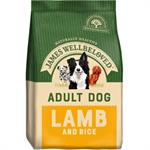
JAMES WELLBELOVED LAMB & RICE ADULT DOG FOOD 15KG
The James Wellbeloved Lamb and rice adult diet is a great maintenance diet for adult dogs.
Are you buying Pallet quantities for Delivery? |
||
| Yes, I am buying Pallet quantities for Delivery* | No, i will be using Click and Collect* | |
| * Please be aware that switching to Pallet only delivery or Click and Collect will clear your basket. | ||
HARKERS RIDMITE 500ML
Harkers Ridmite 500ml
Ridmite is a non insecticidal liquid concentrate to rid mites from coops, cages, hutches and lofts
Ridmite is a non insecticidal liquid concentrate to rid mites from coops, cages, hutches and lofts; and also a multi purpose concentrated cleaner, sanitizer and odour eliminator. It must be diluted with water as directed and filled into a spray bottle before spraying onto red mite and their eggs. Please click here for more information.
Ridmite is a synergistic blend of cationic, amphoteric, non-ionic surfactants, chellates and silicones.
Ridmite is an effective product for controlling red mite in poultry houses, pigeon lofts, hen coops and rabbit hutches.
Non Insecticidal
Disrupts bio films
Controls within 48 hours
Up to six weeks’ protection
Sanitises against bacteria, viruses, fungi and yeasts
Can be used without removing birds or rabbits
Available in 500ml concentrate which must be diluted as directed before spraying onto red mite
Ridmite is a safe and odourless liquid concentrate which must be diluted with water
as directed and filled into a spray bottle before spraying onto red mite and their
eggs. Ridmite entraps the mites, penetrates the cuticle and dissolves the shell of
their eggs thus desiccating them.
DILUTION RATES (parts Ridmite to clean water)
Initial treatment and for heavy infestations of red mite:
1part Ridmite : 10 parts water
Maintenance treatment:
1part Ridmite : 20 parts water
INSTRUCTIONS FOR USE
Spray all surfaces of the livestock house with low pressure spray, paying particular
attention to cracks and crevices. Spray until the point of run off (saturate all
surfaces). Repeat at weekly intervals until control is achieved.
Livestock do not have to be removed during the treatment process.